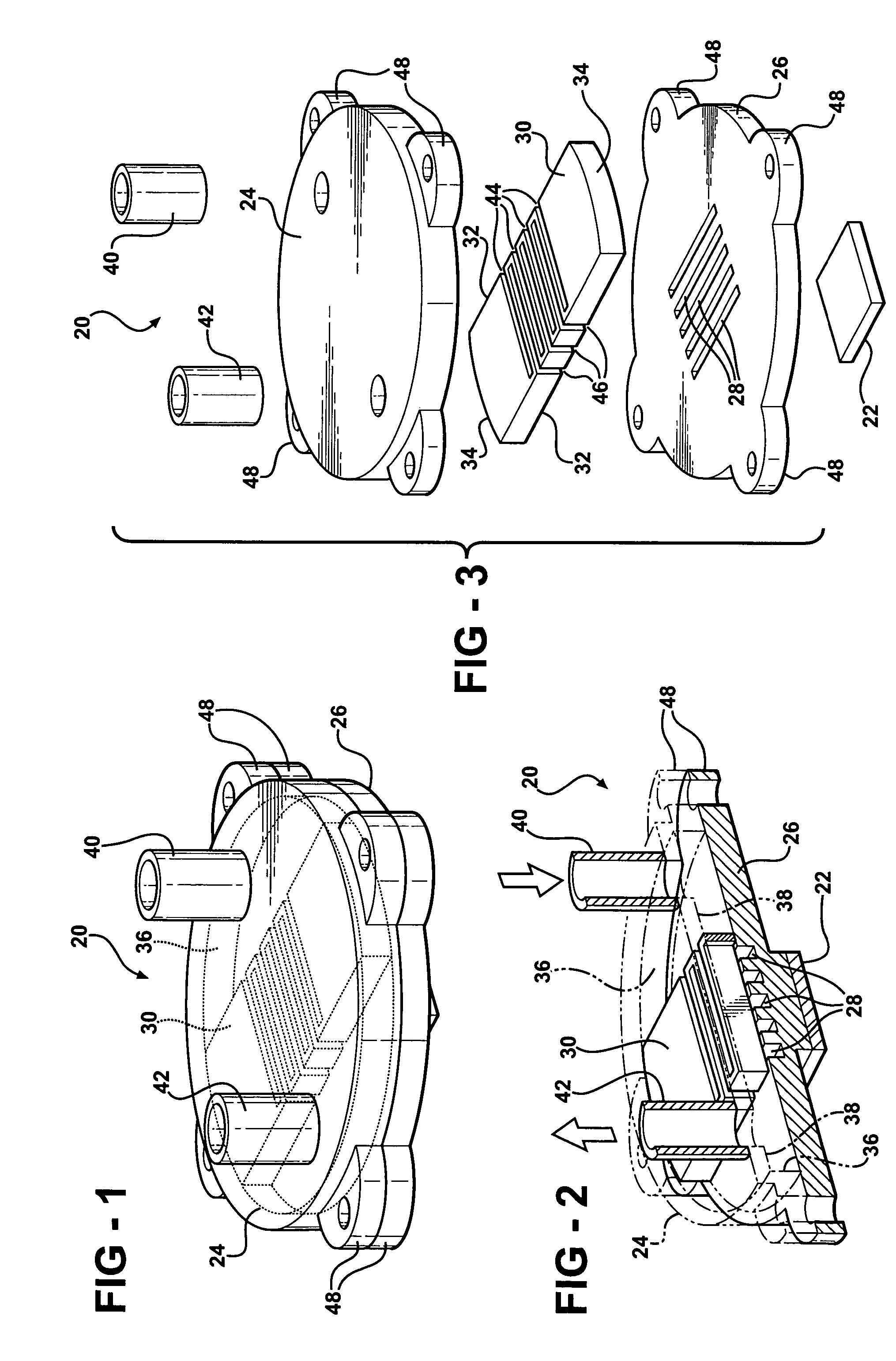Microchannel heat sink
a heat sink and microchannel technology, applied in the field of heat sinks, can solve the problems of heat generated by electrical components such as integrated circuits, and must be dissipated or cooled, and achieve the effect of increasing efficiency
- Summary
- Abstract
- Description
- Claims
- Application Information
AI Technical Summary
Benefits of technology
Problems solved by technology
Method used
Image
Examples
Embodiment Construction
[0015]Referring to the Figures, wherein like numerals indicate corresponding parts throughout the several views, a heat sink 20 is shown generally for transferring heat from a heat source 22 or electronic component to a coolant fluid.
[0016]The heat sink 20 is defined by a housing including a lid 24 and a base 26, the base 26 being a flat cold plate having a top surface and a bottom surface and parallel micro-channels 28 all extending the same distance and each having a base-width bw and a base-height bh into the top surface of the base.
[0017]A manifold plate 30, having a top face and a bottom face to define a manifold-thickness mt, is disposed with the bottom face overlying the micro-channels 28 and having spaced edges 32 extending between opposite ends 34. The lid 24 has a periphery engaging the base and an interior shoulder 36 engaging the ends 34 of the manifold plate 30 to define a recessed surface 38 within the periphery and in engagement with the top face of the manifold plate...
PUM
 Login to View More
Login to View More Abstract
Description
Claims
Application Information
 Login to View More
Login to View More - R&D
- Intellectual Property
- Life Sciences
- Materials
- Tech Scout
- Unparalleled Data Quality
- Higher Quality Content
- 60% Fewer Hallucinations
Browse by: Latest US Patents, China's latest patents, Technical Efficacy Thesaurus, Application Domain, Technology Topic, Popular Technical Reports.
© 2025 PatSnap. All rights reserved.Legal|Privacy policy|Modern Slavery Act Transparency Statement|Sitemap|About US| Contact US: help@patsnap.com



